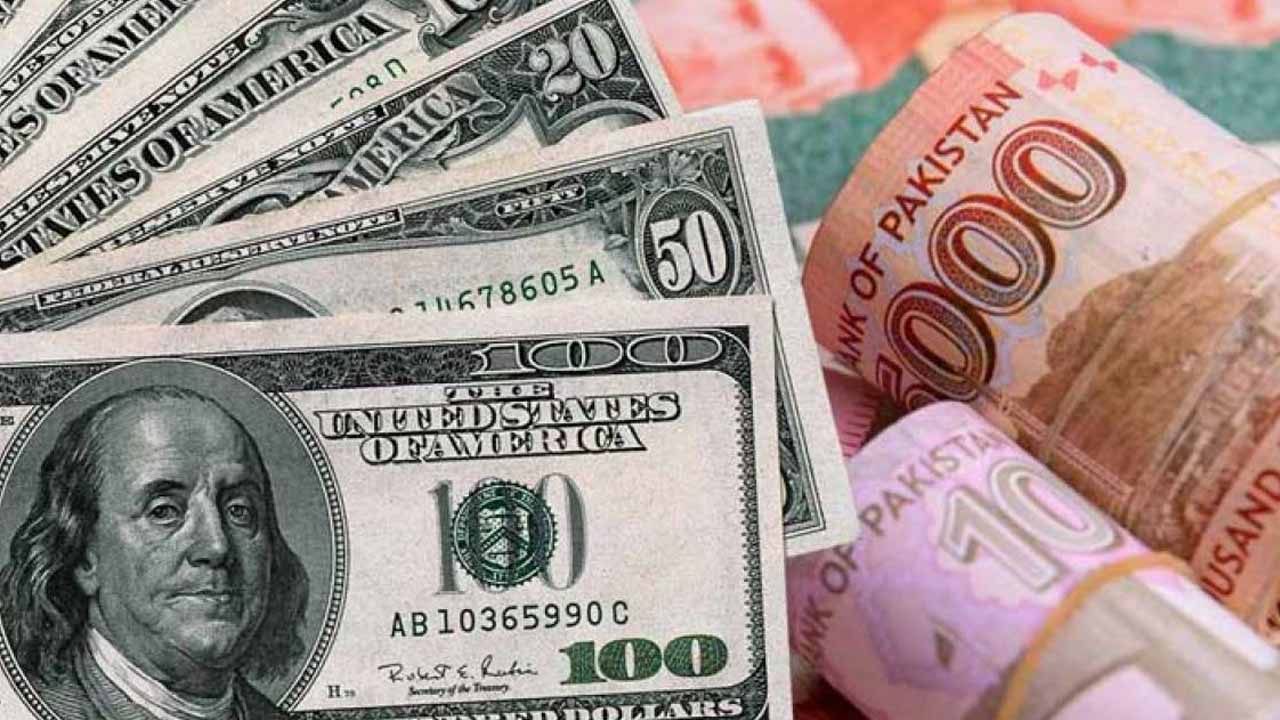The Pakistani rupee saw yet another dramatic fall in just over a month, plummeting 6.66% against the US dollar during the trading session on Thursday.
The rupee dropped by Rs18.98 in the inter-bank market to settle at 285.09 versus the US dollar, according to the State Bank of Pakistan (SBP).
In the interbank market earlier in the day, the rupee had fallen to 284.88 against the US dollar before registering a minor recovery that was short-lived.
On Wednesday, the rupee also fell sharply against the US dollar, but the drop was less severe as the currency ended the day at 266.11 after losing 1.73%, or Rs4.61, in the inter-bank market.
The rupee had earlier experienced a sharp decline when it moved from 230.89 to 255.43 on January 26 as a result of the government loosening what were regarded as administrative measures to control the currency.
The continuous depreciation of the rupee is a result of a market correction, according to Fahad Rauf, Head of Research at Ismail Iqbal Securities Ltd (IISL), in remarks to Business Recorder.
“A significant gap in rates was created between the open and inter-bank market, which became unsustainable,” said Rauf.
“Moreover, reports around International Monetary Fund (IMF) are also not positive, denting investor sentiment.”
Until the IMF programme is revived and inflows materialize, he continued, volatility will remain.
The delay in the IMF program’s restart, according to CEO of Topline Securities Mohamed Sohail, is causing market instability.
He stated that the currency market was becoming shaky due to the IMF’s funding delay.
There have been several payments for imports, according to Tahir Abbas, Head of Research at Arif Habib Limited (AHL), which has placed the rupee under stress.
“As it is the start of the month, a number of import payments have been made. Moreover, the government has also loosened its administrative controls to appease the IMF,” he said.
One of the tasks the IMF wants Pakistan to complete in order to pass its 9th review is the shift to a market-based system for currency exchange rates.
The majority of the other earlier steps, such as raising gasoline and energy prices, enacting new tax laws, and eliminating subsidies in the export and power industries, have already been taken by Pakistan.
Yet, Tahir warned that the depreciation will intensify the inflation problem.
The change occurs on the same day as the SBP’s emergency Monetary Policy Committee meeting is scheduled to declare additional monetary tightening to combat inflation.
In a significant development, the Pakistan Bureau of Statistics (PBS) reported that the country’s trade deficit decreased by 33.18% to $21.3 billion over the first eight months (July–February) of the current fiscal year 2022–23 from $31.879 billion during the same time in 2017.
Globally, the dollar suffered losses on Thursday as Asian currencies were supported by optimism regarding China’s reopening and buoyed by good data, while the euro was poised to have its best week in a month and a half due to sticky inflation.
Overnight, the dollar fell 0.9% against the euro. Given that this occurred amid rising US yields, some analysts believe the dollar may have peaked as February’s surge loses pace
Rise in US crude stocks and concerns about overall global demand restrained advances for oil prices, a major indicator of currency parity, on Thursday, which extended gains from the previous two sessions. China is the world’s largest oil importer.






